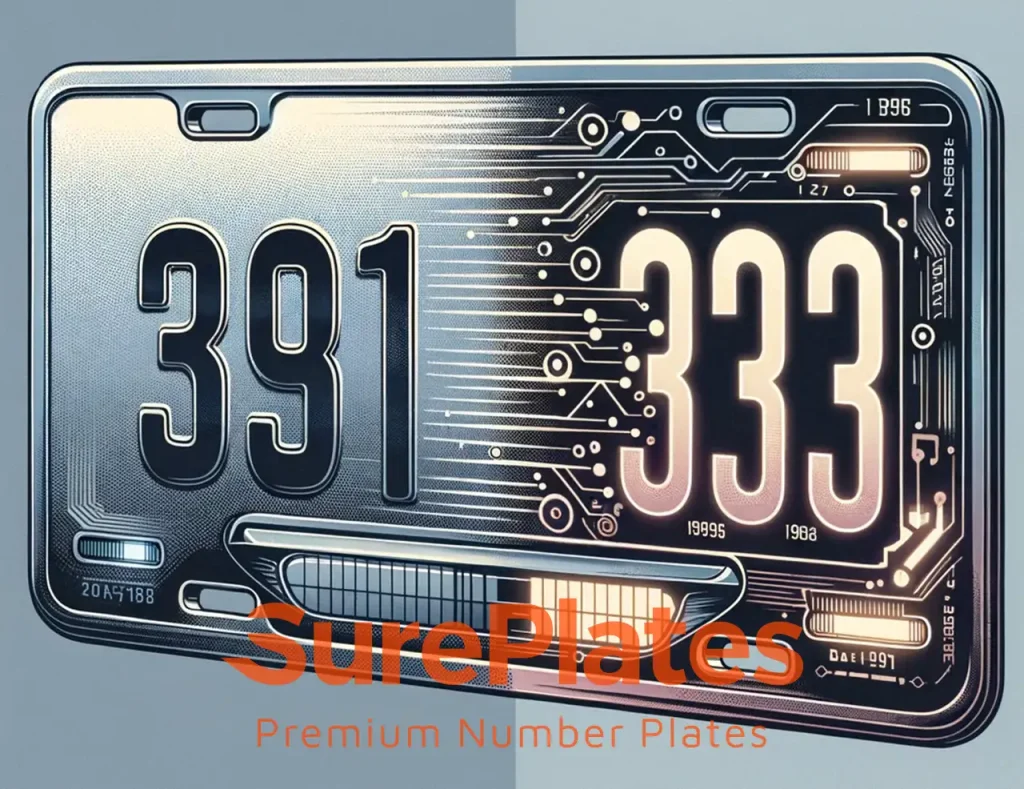It’s fascinating to contemplate what the future holds for various aspects of our lives, including the humble yet essential number plate. Over the past century, number plates have evolved from simple, hand-painted signs to the sleek, glossy acrylic designs we see today. But what does the next decade have in store for these iconic vehicle identifiers? In this article, we’ll explore some predictions for the future of number plates, considering emerging technologies, changing vehicle ownership patterns, and shifting consumer preferences.
The Rise of Digital Number Plates
One of the most significant predictions for the future of number plates is the rise of digital displays. As electronic ink (e-ink) and LED technologies become more advanced and cost-effective, we may see a gradual shift away from traditional metal or acrylic plates towards digital screens that can display a vehicle’s registration number and other relevant information.
Digital number plates could offer several advantages, such as:
- Real-time updates: Digital plates could be instantly updated with new registration numbers, eliminating the need for physical plate replacements.
- Enhanced visibility: LED or e-ink displays could provide improved visibility in low-light conditions, enhancing road safety.
- Customisable designs: Digital plates could allow for greater customisation options, enabling vehicle owners to display personalised messages or designs within legal boundaries.

While digital number plates may seem like a futuristic concept, they are already being tested and implemented in some parts of the world. As technology continues to advance, we can expect to see more widespread adoption of digital plates in the coming decade.
Integration with Smart City Infrastructure
Another prediction for the future of number plates is their integration with smart city infrastructure. As urban areas become increasingly connected and data-driven, number plates could play a crucial role in enabling seamless communication between vehicles and their surroundings.
For example, number plates could be equipped with radio-frequency identification (RFID) tags or other wireless communication technologies, allowing them to interact with smart parking systems, toll booths, and traffic management systems. This integration could streamline various aspects of vehicle ownership and operation, such as:
- Automated parking payments: Number plates could be linked to a vehicle owner’s payment information, enabling seamless, hands-free parking transactions.
- Congestion management: Smart city systems could use number plate data to monitor traffic flow and implement dynamic pricing or routing strategies to reduce congestion.
- Emergency response: In the event of an accident or emergency, number plates could provide first responders with instant access to crucial vehicle and owner information.
As smart city initiatives gain momentum worldwide, the integration of number plates with these advanced systems is likely to become increasingly important in the next decade.

Advancements in Number Plate Materials and Durability
While the focus of number plate innovation often lies in the realm of technology, we can also expect to see advancements in the materials and manufacturing processes used to create these essential vehicle components.
At SurePlates, we’re already at the forefront of this trend, offering high-quality 4D number plates that combine style, durability, and legal compliance. In the coming years, we predict further developments in number plate materials, such as:
- Self-cleaning coatings: Advanced coatings that repel dirt, grime, and water could help number plates maintain their clarity and visibility with minimal maintenance.
- Ultra-durable polymers: New, high-strength polymers could provide enhanced resistance to impact, abrasion, and extreme temperatures, extending the lifespan of number plates.
- Eco-friendly materials: As environmental concerns continue to grow, we may see a shift towards more sustainable, biodegradable materials in number plate production.
By embracing these material advancements, number plate suppliers like SurePlates can continue to offer customers the best possible combination of quality, durability, and style.
The Evolution of Personalised Number Plates
Personalised number plates have long been a popular way for vehicle owners to express their individuality and style. In the next decade, we predict that the demand for personalised plates will continue to grow, driven by factors such as:
- Increased wealth and disposable income: As global wealth rises, more people will have the means to invest in personalised number plates as a form of self-expression.
- The rise of electric and autonomous vehicles: As the automotive industry shifts towards electric and self-driving cars, personalised plates may become a way for owners to differentiate their vehicles in a sea of similar-looking models.
- Cultural shifts and the influence of social media: In an age where personal branding and online identity are increasingly important, personalised number plates could become a way for people to extend their unique persona to their vehicles.
Final Thoughts
As we look ahead to the next decade, it’s clear that the future of number plates is one of innovation, integration, and personalisation. From the rise of digital plates to the integration with smart city infrastructure, the way we identify and interact with vehicles may undergo a some transformation.
Whether you’re a tech enthusiast eager to embrace digital plate technology, or a style-savvy driver looking to express your personality through a unique registration, the future of number plates has something to offer everyone. So buckle up and get ready for an exciting ride as we explore the next frontier of vehicle identification and personalisation.
